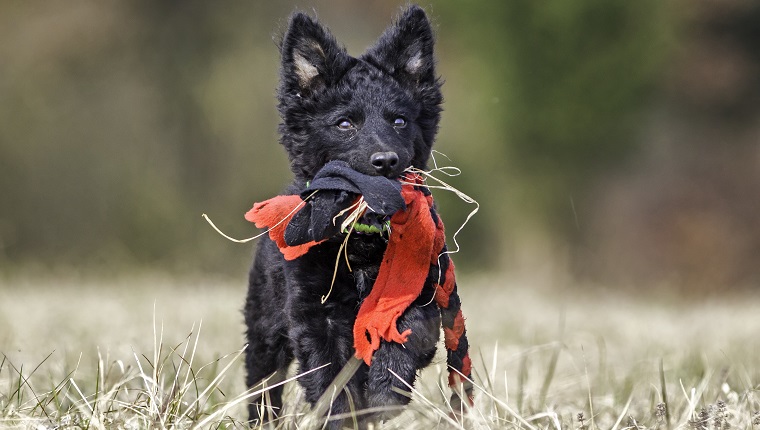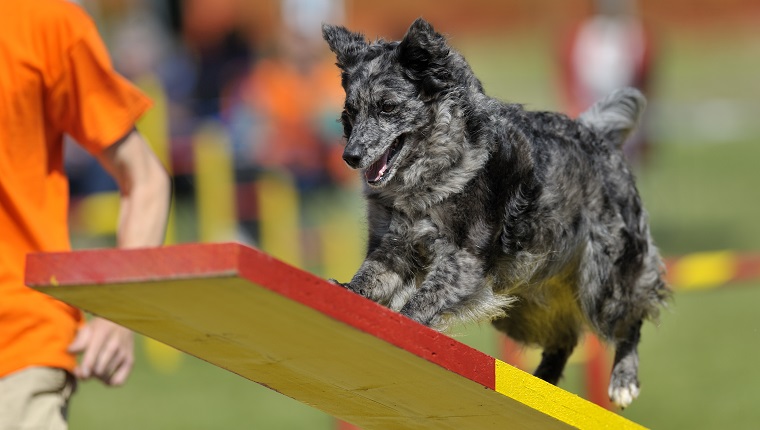
Some dog breeds are more popular than others, but some are so rare that they’ve barely left the homeland where they first appeared.
A few of these breeds are simply not suited to live in another climate. Others require open spaces that make them unsuitable for living indoors.
Here’s a list of five of the rarest dog breeds in the world and some of the reasons they haven’t gained as much popularity as other breeds.
1. Stabyhoun
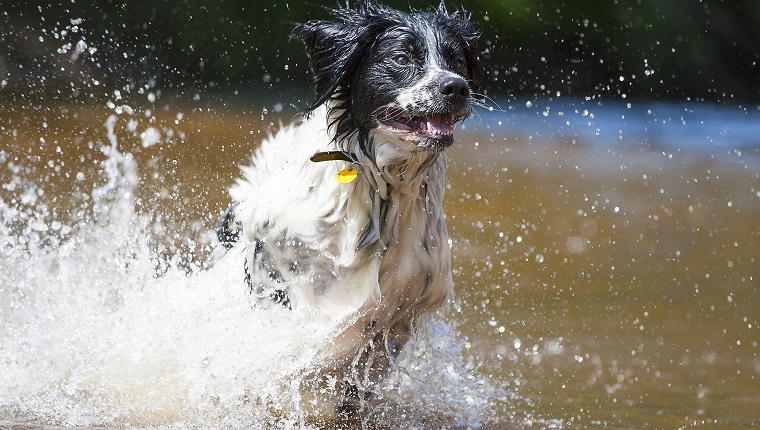
The Stabyhoun breed has almost exclusively lived in the Friesland province of the Netherlands since the 1800s and didn’t move outside of the country until the 2000s.
This dog’s name roughly translates to “stand by me dog,” which is a good name for them, as they stood by their farmer owners for whatever they needed. They were bred and owned mostly by farmers with limited financial means who needed a dog that could hunt, guard, work, and live in the house as a companion.
These farmers couldn’t afford a dog for each specialized task, so one with good all-around abilities was preferable. It’s also this lack of specialization that makes them so rare. Since they aren’t experts at any single job, they’ve been less desirable.
Still, the Stabyhoun is known for being gentle and friendly, especially to other animals and children. Being hunting dogs, they need to stay physically active, and they absolutely love to swim. They’ll spend lots of time in the pool, lake, or any other water near home whenever they can.
2. Mudi

The Mudi is closely related to the Puli, a Hungarian herding dog with a long, corded coat. The Mudi’s coat is also thick and curly, but nowhere near as corded as the Puli.
They were was separated as a breed from the Puli in the 1930s as shepherding was mostly replaced by farming, and the Mudi were found to have a better disposition and a wider range of talents. In fact, although the Mudi is quite rare, it is slowly gaining in popularity while the Puli’s numbers are dwindling.
The Mudi is excellent at dog sports like Frisbee and agility training. They’ve also retained some of their herding instincts.
The main reason they’re not more popular is that their high energy level makes it difficult for them to live in apartments or homes without large backyards. These dogs crave exercise, which makes them more suited to outdoor activity and wide open spaces.
3. Tibetan Mastiff
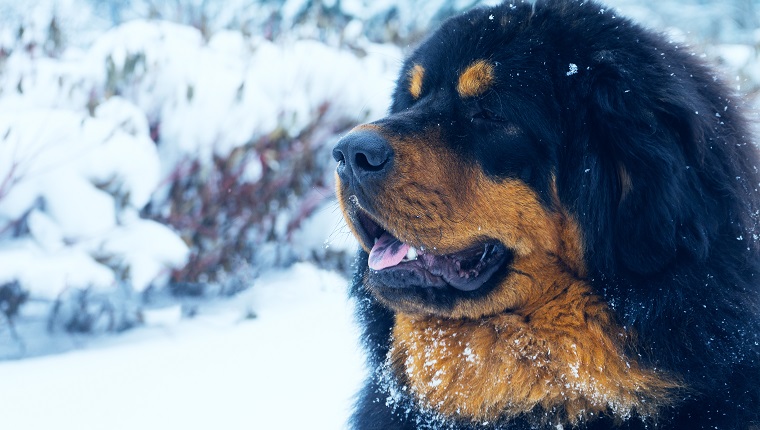
This rare breed is also one of the largest dog breeds in the world. In fact, they’re the ancestors of many other large breeds, including the Mastiffs, the Boxer, and the Saint Bernard.
With their large size and incredibly fierce bark, they were charged with the protection of the villages where they lived. This makes them very territorial, which can make it difficult to own a Tibetan Mastiff if you live in an active neighborhood.
Despite their rarity, they are gaining popularity as a status symbol in China. It is because they are so rare, yet so sought-after that the price for these big dogs has skyrocketed. A Tibetan Mastiff sold in China for $ 1.9 million in 2014, making it the most expensive dog ever sold.
4. Azawakh
![Azawakh,pet,dog,animal,one animal,nature,nobody,day,outdoor, outside, outdoor shots, outdoor shot, outdoors,outdoor,horizontal, horizontal format,color, coloured, colored, colors, colours,photograph,geography,Europe,western europe,central europe,Germany,Southern Germany,Hesse,Kassel,Kassel,emotion,observant,object,dog collar, dog collars,focus,Differential Focus, selective focus, selectively focussed,focus on foreground,close-up, close-ups, close up, close ups, close-up shot,sideviews, side, side view, side views, sideview,profile, profiles,animal body,animal head,portrait,animal portrait, animal portraits,seeing,looking around,Vertebrate,mammal,dog,Pure Bred Dog, Pure Bred Dogs,Hound dog, Hound dogs,greyhound [(c) F1online www.f1online.de, KEINE VEROEFFENTLICHUNG OHNE HONORAR Tel. 069/80069-0, E-Mail:agency@f1online.de , Bankverbindung: Frankfurter Sparkasse 1822, BLZ 50050201, Kto-Nr. 139329]](https://dogtime.preprod.vip.gnmedia.net/wp-content/uploads/sites/12/2017/08/rarest-dog-breeds-4.jpg)
They are sighthounds, which means they are attracted to movement. They’ll chase anything that’s in motion, like bikes, cars, or running children. But they’re also quite shy with humans they don’t know. To this day, they aren’t very common outside of their homeland.
Their lack of popularity outside of the desert may be for a few reasons. First, they are not suited to live in cold weather. Being from a hot, dry climate makes them intolerant to chilly areas.
Also, they can be standoffish. They usually don’t allow humans they aren’t familiar with to approach. Their desire to chase anything that moves can cause problems, and they absolutely need to run, which makes apartment life tough.
5. Thai Ridgeback
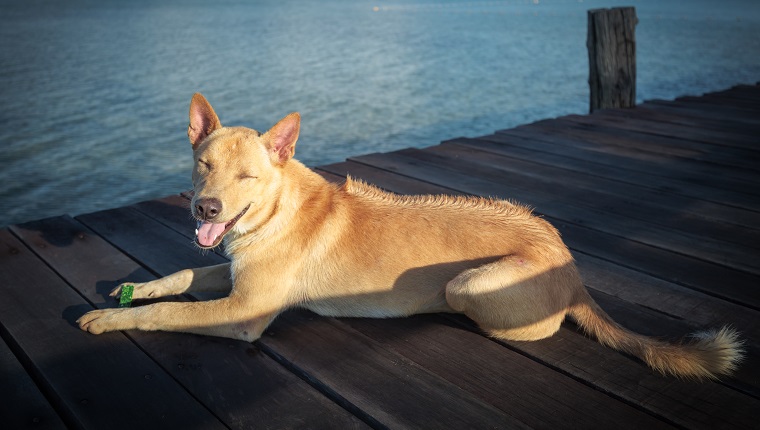
The Thai Ridgeback has only been in the United States since 1994. There are only about a thousand of them outside of Thailand and only about a hundred in the U.S.
They were originally bred as hunters and guard dogs. In Thailand they are prized for their loyalty as protectors of their homes and families. They are one of only three breeds to have a ridge of fur that grows in the opposite direction running down their backs. Thai Ridgebacks are very muscular and are great at agility exercise.
Their lack of popularity outside of Thailand may stem from their ferociously protective nature. They’re territorial and don’t get along well with other dogs unless they are properly trained.
Since they are so muscular, they can be very intimidating. They also come from a warm climate and don’t do well in cold weather.
Is your dog one of these rare breeds? Did we miss your favorite uncommon dog? Let us know in the comments below.
Visit DogTime’s Breed section for more info about many of your favorite dog breeds!
